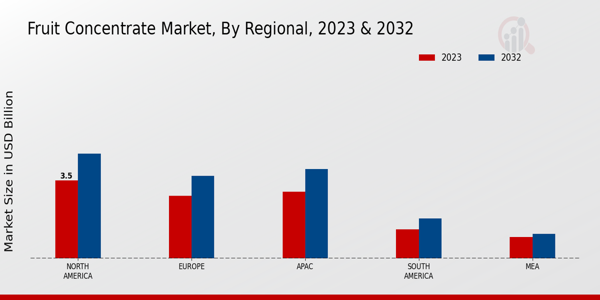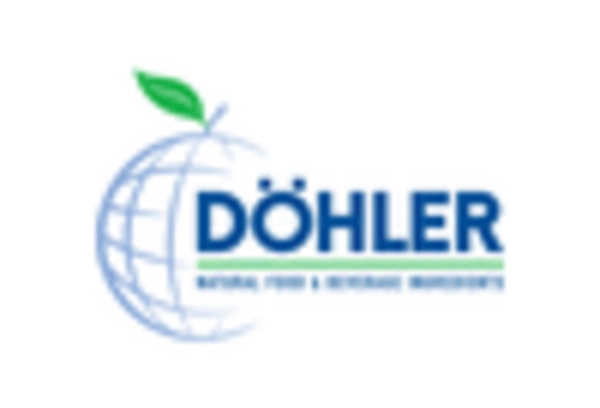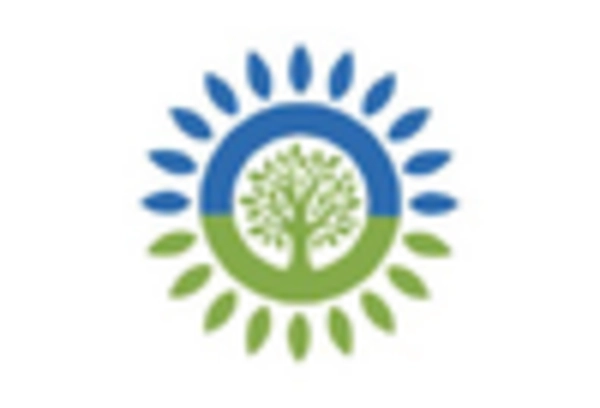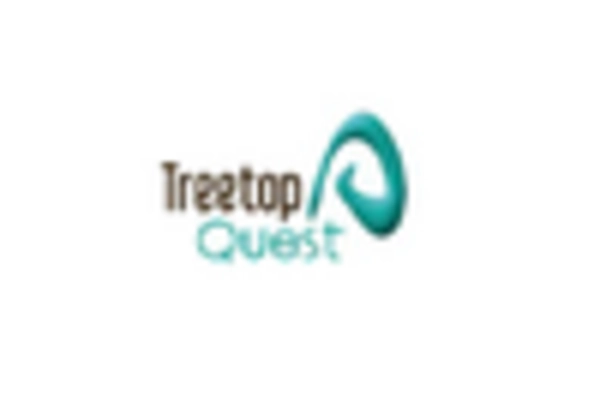Expansion of Beverage Sector
The beverage sector plays a pivotal role in the growth of the Fruit Concentrate Market. With the increasing popularity of fruit-based beverages, including juices, smoothies, and flavored waters, the demand for fruit concentrates is on the rise. Market analysis suggests that the beverage segment accounts for a substantial share of the overall fruit concentrate consumption, with projections indicating that this segment will continue to expand. The shift towards healthier beverage options, coupled with innovative product launches, is likely to drive the growth of the Fruit Concentrate Market. Companies are investing in research and development to create new flavors and formulations that cater to evolving consumer tastes.
Increasing Export Opportunities
The Fruit Concentrate Market is benefiting from increasing export opportunities as countries seek to diversify their food supply chains. With the rising demand for fruit concentrates in various regions, manufacturers are exploring international markets to expand their reach. Data suggests that exports of fruit concentrates have been on the rise, driven by the growing popularity of fruit-based products in emerging markets. This trend presents a lucrative opportunity for producers to tap into new customer bases and enhance their market presence. As trade agreements and logistics improve, the Fruit Concentrate Market is likely to see further growth in export activities.
Growth in Food Processing Industry
The Food Processing Industry is a significant driver of the Fruit Concentrate Market, as manufacturers increasingly incorporate fruit concentrates into various food products. This trend is largely attributed to the versatility of fruit concentrates, which can enhance flavor, color, and nutritional value in processed foods. Market data indicates that the food processing sector is expected to grow steadily, with fruit concentrates being utilized in products such as baked goods, dairy items, and snacks. This integration not only improves the sensory attributes of food products but also aligns with consumer preferences for natural and wholesome ingredients, thereby bolstering the Fruit Concentrate Market.
Rising Demand for Natural Ingredients
The Fruit Concentrate Market is experiencing a notable surge in demand for natural ingredients, driven by consumer preferences for healthier and more authentic food options. As consumers become increasingly health-conscious, they are gravitating towards products that contain natural fruit concentrates rather than artificial flavors or sweeteners. This trend is reflected in market data, which indicates that the demand for natural fruit concentrates is projected to grow at a compound annual growth rate of approximately 5.5% over the next five years. Manufacturers are responding to this shift by reformulating their products to include higher concentrations of fruit extracts, thereby enhancing the appeal of their offerings in the Fruit Concentrate Market.
Innovations in Preservation Techniques
Innovations in preservation techniques are transforming the Fruit Concentrate Market by extending the shelf life and maintaining the quality of fruit concentrates. Advances in technology, such as high-pressure processing and freeze-drying, allow manufacturers to produce fruit concentrates that retain more of their natural flavors and nutrients. This is particularly important as consumers demand fresher and more nutritious products. The ability to offer high-quality fruit concentrates with longer shelf lives is likely to enhance market competitiveness and attract a broader customer base. As a result, the Fruit Concentrate Market is poised for growth as these innovations become more widely adopted.


















Leave a Comment